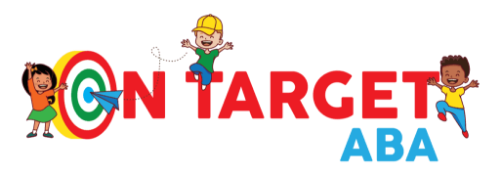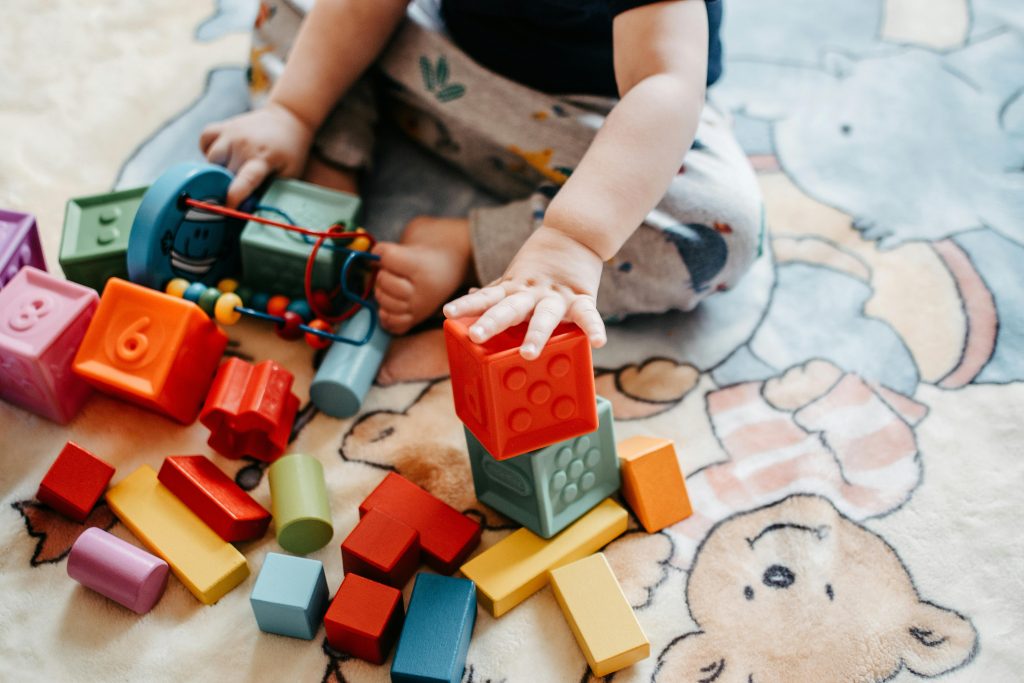🧠 AI Summary:
This article explores how parents can apply simple, effective ABA therapy strategies at home to support their child’s progress. It highlights easy-to-use tools for building communication, independence, and positive behavior outside of formal therapy sessions. Readers will learn how On Target ABA empowers families to integrate ABA principles into everyday routines—turning daily life into opportunities for growth.
💙 Introduction: Where Learning and Daily Life Meet
When therapy ends for the day, learning doesn’t have to stop. At On Target ABA, we believe the best progress happens when therapy and home life work hand in hand. Every meal, playtime, and bedtime routine can become an opportunity for growth.
The good news? You don’t need a degree in ABA to make a meaningful difference at home. With a few simple strategies, parents can reinforce skills learned in therapy and help their child generalize those skills to the real world.
Let’s explore how to make your home an extension of your child’s therapy journey — one routine at a time.
🧩 What Is ABA Therapy and Why Does It Work?
Applied Behavior Analysis (ABA) is an evidence-based approach that helps children with autism and developmental differences learn important life skills. It’s rooted in understanding how behavior works — what triggers it, what maintains it, and how to encourage positive change.
The foundation of ABA is simple: behavior that’s rewarded is more likely to happen again. Through reinforcement, structure, and consistency, children learn new ways to communicate, engage, and thrive.
At On Target ABA, we apply these same principles in our centers, classrooms, and even during parent coaching sessions. But with guidance and practice, parents can easily bring these strategies into their everyday routines.
🏠 1. Build Routines That Support Success
Children with autism often find comfort and confidence in predictable routines. When parents create clear schedules and transitions, it helps reduce anxiety and challenging behaviors.
Try This:
- Use visual schedules with pictures for morning, school, and bedtime.
- Announce changes early: “In five minutes, we’ll clean up toys.”
- Celebrate completion of each step with a small reinforcement like high-fives or praise.
💡 Pro Tip: Routines don’t need to be rigid — just consistent enough that your child knows what’s coming next.
🗣️ 2. Encourage Communication Everywhere
Communication growth happens beyond therapy walls. Every interaction — snack time, car rides, playtime — can strengthen your child’s communication skills.
Try This:
- Model language at your child’s level: “Ball!” → “Big red ball!”
- Offer choices instead of yes/no questions (“Do you want grapes or crackers?”).
- Pause before giving something to encourage your child to ask or gesture.
🎯 ABA Principle in Action: This teaches manding (requesting), a core communication skill in ABA that increases independence and reduces frustration.
💬 3. Use Positive Reinforcement Consistently
Reinforcement is the heart of ABA — and it works just as well at home. Recognize and reward your child’s positive behaviors to encourage them to continue.
Try This:
- Use specific praise (“I love how you cleaned up your toys!”).
- Offer small motivators: a favorite song, sticker, or 5-minute game break.
- Keep reinforcers meaningful — they should be something your child values.
⚡ Remember: The key to reinforcement is immediacy. Praise or reward should follow the behavior within seconds.
🧼 4. Turn Daily Tasks into Learning Opportunities
Every routine — brushing teeth, setting the table, folding laundry — can be transformed into a mini-lesson. These tasks build independence, fine motor skills, and confidence.
Try This:
- Break tasks into small steps (a process called task analysis in ABA).
- Model the action first, then let your child try.
- Provide gentle prompts (gestures, words) and fade them as independence increases.
🧩 Example: “First we get the toothbrush, then we put on toothpaste, then we brush.” Celebrate success at each step!
🧠 5. Teach Emotional Regulation Through Play
Learning to recognize and manage emotions is essential. Parents can use play to practice identifying and expressing feelings in safe, fun ways.
Try This:
- Use emotion cards or mirrors to label feelings.
- Act out silly faces together — “Show me happy! Show me surprised!”
- Reinforce calming strategies like deep breaths, hugs, or quiet corners.
At On Target ABA, therapists often model emotional labeling during play. When parents continue this at home, children learn to connect words to feelings faster.
🤝 6. Collaborate with Your ABA Team
Consistency is key. When parents and therapists communicate regularly, children experience faster progress.
Ways to Stay Connected:
- Share updates about behaviors you see at home.
- Ask for feedback on reinforcement ideas or visual aids.
- Attend parent training sessions or review data sheets with your BCBA.
💬 Why It Matters: ABA therapy works best when everyone uses the same strategies. By mirroring what your child experiences in therapy, you reinforce learning across environments.
🌟 7. Celebrate Every Success — Big or Small
Progress in ABA therapy is often measured in small steps — a new word, a calmer transition, a cooperative moment. Every one of those moments deserves recognition.
Parents can build a culture of celebration at home. Whether it’s a high-five, sticker, or shared happy dance, these celebrations teach your child that effort matters.
At On Target ABA, we remind families that growth looks different for every child — and every bit of progress counts.
📘 Additional ABA Strategies for Parents
- Use clear expectations: Say what to do, not what not to do (“Walk, please” instead of “Don’t run”).
- Catch good behavior often: Positive attention is the best motivator.
- Be patient: Change takes time — progress, not perfection, is the goal.
- Keep learning: Ask your BCBA for home practice ideas each week.
💙 How On Target ABA Supports Families
Our mission at On Target ABA is to empower families with knowledge and confidence. From our Autism Scholarship Program (ASP) classrooms to our center-based and in-home services, we provide compassionate, data-driven therapy tailored to each child’s needs.
We believe parents are our most important partners — because real progress happens when therapy meets home.
🏁 Conclusion: Bringing ABA to Life at Home
When families embrace ABA strategies at home, they help their children reach milestones faster — and with more joy. You don’t need hours of training or complex materials. Just small, consistent steps rooted in patience, praise, and play.
At On Target ABA, we’re here to support you every step of the way — helping your child grow at home, at school, and beyond. 💙

